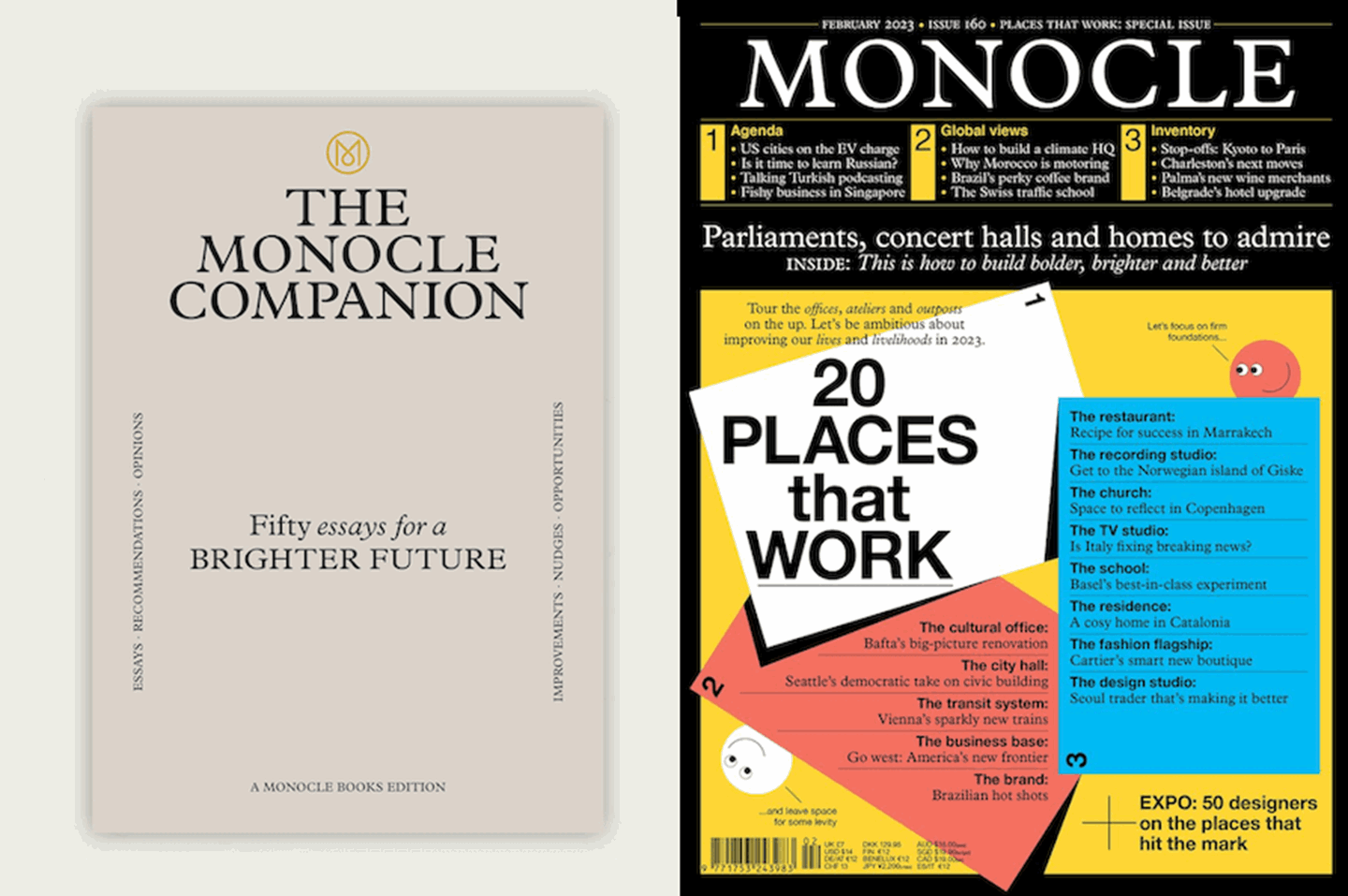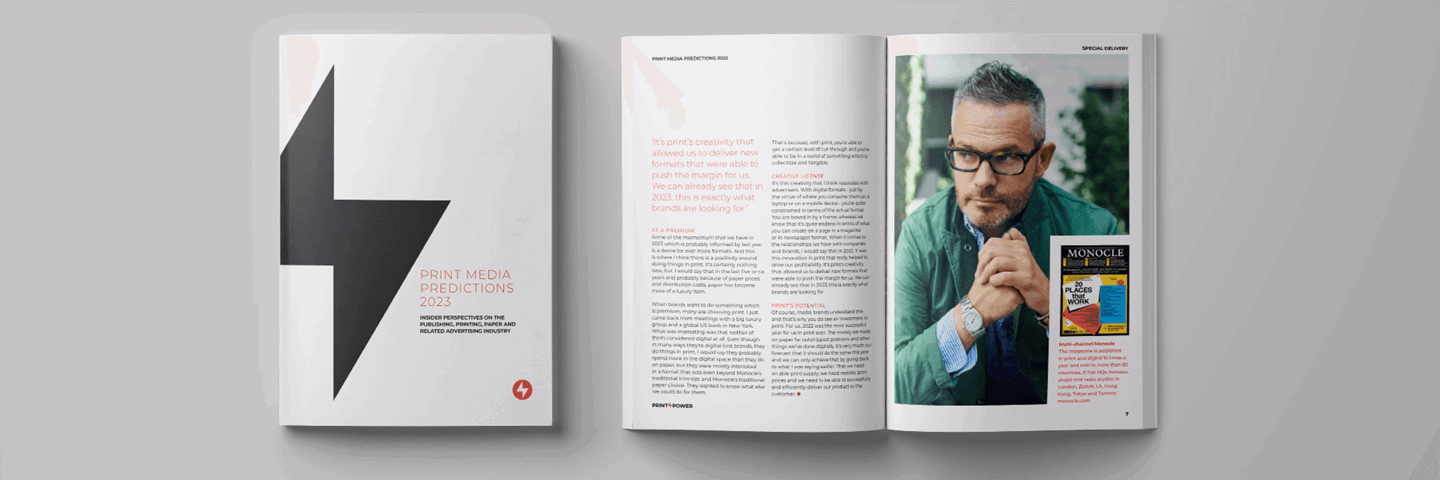Read all about it!
I think it’s essential we have a resilient, buzzy, engaged and entertaining newsstand. Because if I think about the big brands that we work with, and about the most important cities for us, there is something to be said for being top of mind and being present. If I’m a media planner for a major luxury goods group based in Geneva and I don’t see my core titles displayed at Geneva airport and train station, then I have to wonder if they’re reaching the readers in other corners of the world when they’re not present in the main city where I’m functioning.
Show & tell
Of course, when a publisher has diminishing margins, it becomes very difficult to be present in as many places as possible. I believe that the retailer and the publisher need to be in lockstep and are able to think things though. Like, what does that wall look like, what do those risers for display look like, and how are they merchandising? We brought out the Monocle Companion last year which is pocketbook size. It’s a very thick, meaty volume of essays, but it hasn’t been designed to be displayed in a traditional, vertical wall system. You can imagine the complexity of having conversations with the distributor, the wholesale partners and the retailers about a special approach to display. Nevertheless, the product has been hugely successful, both I would say because we’ve been able to sell it through our own channels, on ecommerce or through our own stores.
At a premium
Some of the momentum that we have in 2023, which is probably informed by last year. is a desire for ever more formats. And this is where I think there is a positivity around doing things in print. It’s certainly nothing new, but I would say that in the last five or six years and probably because of paper prices and distribution costs, paper has become more of a luxury item.
When brands want to do something which is premium, many are choosing print. I just came back from meetings with a big luxury group and a global US bank in New York. What was interesting was that neither of them considered digital at all. Even though in many ways they’re digital-first brands, they do things in print. I would say they probably spend more in the digital space than they do on paper, but they were mostly interested in a format that was even beyond Monocle’s traditional trim size and Monocle’s traditional paper choice. They wanted to know what else we could do for them.
That’s because, with print, you’re able to get a certain level of cut through and you’re able to be in a world of something which is collectible and tangible.




